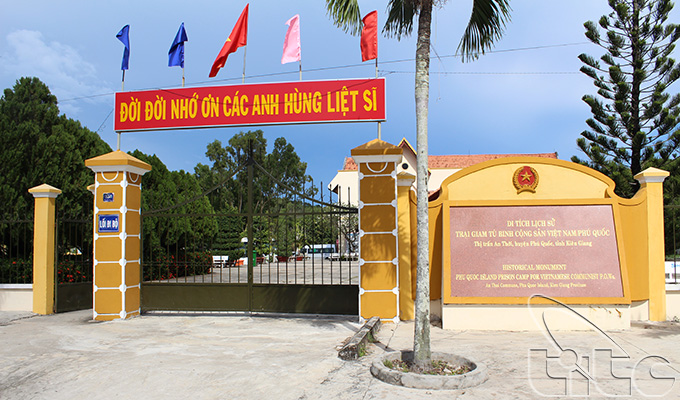(TITC) - Located in An Thoi Town, Phu Quoc Island District, Kien Giang Province, 30km to the southeast of Duong Dong Town, Phu Quoc Prison Relic was also known as “The living hell” because American-Sai Gon puppet government used many brutal torture forms, such as nailing, barbed-wire cages, burying alive… to subdue Vietnamese revolutionaries’ fighting will.

In 1950, the French Colonial built Cay Dua (Coconut tree) Prison in Phu Quoc in an area of about 40ha, including 4 zones of A, B, C, D to detain prisoners against France. In July 1954, after the Geneva Agreements, France returned most prisoners in Cay Dua Prison to the Democratic Republic of Viet Nam and the prison was closed down.
In 1955, Ngo Dinh Diem - the first president of the Republic of Viet Nam had Cay Dua Prison repaired for the purpose of detaining communist prisoners. In 1966, the Republic of Viet Nam’s Government had the area of the prison extended to 400ha with 4 zones of A, B, C, D and named Viet Nam/Phu Quoc Communist Prison (or Phu Quoc Prison). In 1972, Phu Quoc Prison had 14 zones divided into 4 sub-zones each. Each sub-zone included 11 cells with iron truss. Phu Quoc Prison became the largest prison of the Republic of Viet Nam and strictly guarded with 10 – 15 layers of barbed-wire fences, 14 fortresses with heavy machine guns and many mobile sentry posts.
During the period of 1967 - 1973, the prison detained over 40,000 prisoners, 4,000 of them were killed, tens of thousands ones were injured and maimed. However, with their heroism and iron will, the prisoners in Phu Quoc Prison organized successfully 42 escapes in many forms.
Now, Phu Quoc Prison Relic consists of the fist-shaped monument – the symbol of Phu Quoc prisoners’ heroic spirit to break the chains, martyrs cemetery, house of artifacts and outdoor display area. To Phu Quoc Prison Relic, visitors can watch documentary films on the prison, and observe various models, remnants and artifacts which stimulate brutal torture sceneries of communist prisoners.
Phu Quoc Prison Relic has recognized as National Historical Relic since 1996 and Special National Relic since March 2015.
Thu Giang